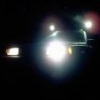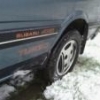Leaderboard
Popular Content
Showing content with the highest reputation on 04/11/20 in all areas
-
Here's the how to I did on it. https://www.subaruoutback.org/threads/driveshaft-u-joint-replacement.465866/post-5685977 And AutoZone part number4 points
-
Late reply, but generally any factory dump pipe will work. Build your exhaust from the end of that. Cheers Bennie1 point
-
You will need to have your tailshaft machined to fit the replaceable uni joints. I’ve not done this work, only heard about others doing it. I don’t know if the machining is to get rid of the stakes that hold the factory uni’s in or if it includes machining a flat spot for the C clips to sit on properly. I might get around to doing this one day... Cheers Bennie1 point
-
I am just about ready to put the EJ22T in my Loyale. This step is about 5 years overdue! The wiring is finally done. I am going to need a down pipe from the turbo to the rest of the exhaust. Is there an "off the shelf" down pipe from some other Subaru model that will work? I have an EJ22T turbo flange if I have to have one custom made. I also have a stock EA82T down pipe but it won't fit on the 22T's turbo. Any ideas short of having it towed to the exhaust shop? Thanks for any advice.1 point
-
I know there are a few of these threads floating around but I can never find them when I need to. Seems to be like that with a lot of things. So you got a P0325. Chances are if your Subaru has over 150k miles, you're gonna have to deal with this at some point, if it's not the reason you're reading this now. But what the hell is a knock sensor, and where is it, what's wrong with it, and why is it making my engine run like crap? A knock sensor is. The knock sensor senses knock. (yeah we figured that much smartass :-p , what's a knock?) Knock or spark knock, is defined in the automotive world as Detonation. Detonation is a spontaneous combustion of the fuel/air mixture in the combustion chamber during , but not initiated by, the ignition process. Detonation occurs when the heat and/or pressure of the flame created by the ignition of gases near the spark plug, causes gases in another area of the chamber to ignite as well, but before the initial flame can advance across the combustion chamber in the manner required for proper combustion. Instead of one combustion, now you have two. This creates a massive pressure spike as the gases expand much more rapidly than intended for the design of an internal combustion engine. That spike in pressure creates a resonant "shockwave", for lack of a better term, that "rings" throughout the engine and creates a sound most refer to as a "Ping". Any damage (and there can and will be damage in certain cases) from this "shockwave" will be limited to the cylinder in which it originated, but the noise it creates, the "Ping", which is similar to a hammer strike, will pass through the entire engine, and can be clearly heard outside of the car if the "knock" is bad enough. This sound is always the same frequency, and so a knock sensor is "tuned", in a way, to "listen" for sounds within a range of frequencies in order to react to knocks and provide data, in the form of an AC voltage wave, for the cars ECU. What causes knock? Octane is a main contributor to engine knock. Octane controls gasolines ability to resist combustion. Why would you want to resist combustion of gasoline? Because with heat and compression, the fuel/air mixture inside the engine can ignite all on it's own if the octane in the fuel is insufficient to prevent combustion under the conditions created by the engine. (This is why high compression engines require higher octane fuel) In order for the engine to run properly, create as much power, and as few harmful emissions as possible, we need the gasoline to combust at the RIGHT time. Timing is everything in an engine. Spark timing is wrong, it won't run. Injection timing is wrong, it wont run. Valve timing is wrong, it won't run. Everything has to work together, in perfect timing, down to mere milliseconds, in order for the engine to run, and this includes controlling the exact time that the fuel/air mixture ignites, and how long it takes for that mixture to burn. Another major contributor to knock is spark timing advance. As the engine spins faster, the time between sparks has to be reduced in order for the spark to occur when the pistons are in the correct position for optimal power production. The cars ignition system controls this based on inputs from the ECU. The engine spins faster, so the ignition system advances the timing of the spark in order to compensate. The problem is advancing the timing too far will lead to knock under certain conditions. When the ECU gets a signal from the knock sensor that a knock has occured, it will immediately back off, or retard, the spark timing in order to prevent more knock from occuring and causing severe damage to the engine internals. What kind of damage? Mostly cracked pistons or broken spark plug electrodes, but in severe cases (such as with high HP or forced induction) it can be catastrophic fracture of piston crowns, wrist pins, or connecting rods. Cracks in the cylinder head or engine block. Or it can lead to a condition known as pre-ignition. Which generally is identified after the fact by a hole melted through the center of the piston. Ok, the crash course on knock out of the way, What exactly is wrong with this sensor that it demands my attention to replace? Most of the time, it is corrosion on or inside the sensor that is creating a false voltage reading, or no reading at all. The ECU relies on this sensor to keep the engine healthy, so if it does not receive the signal it expects from the sensor, it concludes that there must be something wrong and it will then set a code, and illuminate the CEL. However sometimes the sensor can send false data, and the ECU may not catch on right away. It may tell the ECU that knock is occuring when it is not, or that no knock is occuring even when it is. This tends to result in driveability issues ranging from random power surges during acceleration, to misfiring and even stalling of the engine in some cases, even at idle engine speed. And this can happen even with no CEL, depending the type of failure of the sensor. So what is thing thing? And where is it? Subaru Knock sensors look something like this: Depending on your year and model yours will be similar but the designs did change slightly every few years. The one pictured above fits 95 and 96 EJ22. 97 to 99 are similar but have a 2 pin plug instead of single pin. Then somewhere around 99- 2000ish the design changed to a type that has a plug directly on the sensor body. Not sure It still lives in the same place on your EJ engine though, from 1990 all the way up to at least 2008 from what I can find. It is hidden below the intake manifold at the rear of the engine. Look straight down in the hole between the throttle/cruise cable levers on the left side of the throttle body and the number 4 intake runner. It will almost certainly be covered in dirt/grease/grime and will appear to be a grey blob with a wire sticking out of the side. Now that you've found it, you have to have a 10" extension or a few extensions stacked together to get to it. It has a 12mm bolt holding it to the block. Loosen the bolt, and cram your hand down in there from the back side of the throtle body to fish the sensor out from under all the hoses and wires down there. On later models it helps to remove the air box that is attached to the TB. Unhook the wire connector by fiddling with the locking clip, and you can remove the sensor from the car. What generally goes wrong with this sensor? Most of the time the housing cracks due to heat cycling. The plastic dries out and splits like this: The one on my car also had a crack here: And two more here: Out with the old and in with the new! But wait... there's a catch! Subaru specifies the sensor be installed at a 45° angle to the centerline of the engine. The section of the sensor housing with the wire sticking out must be turned to the proper angle. Why is this important? Better sensitivity? Lower chance of inteference? Could be any number of things, but the primary reason (I beleive) is because it won't seat properly and the sensor housing will be damaged if Subaru's instructions are not adhered to. The area of the block around the sensor is not flat, there is a hump about a half inch away from the sensor mounting boss,and there is a structural ridge in the block towards the bellhousing that can also interfere with the sensor. This area is very difficult to photograph, but I have outline the areas in question in this pic: The blue area is the "hump", the red is the ridge, and the green area is the "safe zone" where the sensor housing will not be damaged. Here is an example of a sensor that was installed incorrectly: Vs one that was installed at the proper angle: (looks familiar don't it? ) The incorrectly installed sensor will eventualy fail because the housing is stretched outward at the base: This creates an area where moisture can enter the sensor. This will lead to corrosion (which you can see thre is already a small amount in the area under the plastic) which will cause the sensor to send eratic readings, or no reading at all. Plug the wire connector of your new sensor into the wire harness and fish the sensor back into the nest where it lives. Once the sensor is in place stick your hand back down in there and pull the wire end into that "safe zone" before you start tightening that bolt down. But wait... There's more!!!! You can't make the hold down bolt too tight or else it can damage the sensor. Remember where I said these things are "tuned" to listen for a certain frequency? Over-tightening the hold down bolt can deform the electric element of the sensor in such a way that it will not react to knocks the way in which it was designed. This will cause the sensor to react to different frequencies, telling the ECU that knocks may be occuring, when in fact they may not be. The ECU retards the ignition timing, so far in some cases that it causes the engine to misfire. The ECU could also go into limp mode which will severely limit power. Subaru specifies a torque of 17.3ft lbs. Which is practically nothing. "Snug" is a good way to put it, that's all you need to hold the sensor in place. Once the bolt seats to the sensor a turn of the wrist with the ratchet is plenty to hold the sensor. And you're done! Imagine that! If the code still persists there could be dirt or corrosion in the wire connector, or a break in the wiring between the sensor and the ECU. A factory service manual for your year vehicle will have specifics for troubleshooting. Replacing the sensor didn't fix your engine running issue? If the sensor was cracked it needed to be replaced anyway, so think of it as preventative maintenance. You'll have to track down the underlying problem.1 point
-
Good read. I appreciate the original idea, posting a specific wuestion to get a specific answer, but getting many tertiary posts redirecting the question, etc. But on the topic of 2.5-2.2 swaps and not getting running the OB as well as the torque-ier more powerful 2.5, how well or poorly does a 2.2 turn 4.11 gears? i'm curious about how a 2.2 turning 27" tires would do going from 3.90 final to 4.11 final, or even 4.44 final? would it have the power and torque to turn the gears effectively and use gearing to compensate for an upsize tire change? Its a question of lower output 2.2's ability to run the 2.5's gearset. I appologize if people feel this is a diversionary post, but this thread got me thinking of that question. thanks1 point
-
Kinda funny that you've come full circle. But honestly we were trying to help you all along. You just had to be willing to listen to answers broader than your question. In the end noone here makes or looses money on your decision. And the decision is yours to make. We're just trying to share experience - which is probably exactly why you posted here to begin with. There is lots of good info and posters here. Personally I wish you well whatever you choose. And folks here will continue to answer your questions. Although it's always a little better if you do some research before asking. This is your first Subaru HG experience. Many here have run into this situation many, many times. And that's where all the suggestions came from. To help with the learning curve and options.1 point






